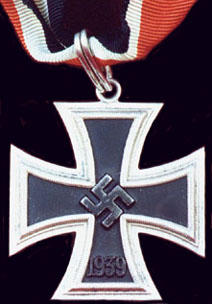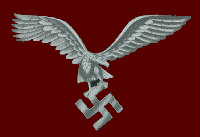|
|
|
 |
 |
Gallands Luftwaffe |
 |
 |
Major
Heinz-Wolfgang
Schnaufer
NJG 2
Air Victories
Major
121 Kills
|
Major Heinz-Wolfgang Schnaufer Whilst Jabs and Lent were somewhat reluctant convertees from day to night fighting, the same cannot be said of the man who was to survive the war as Germany's top night fighter ace with a total of 121 night victories, and a Ritterkreuz with Diamonds, Swords and Oak Leaves. Heinz-Wolfgang Schnaufer took to night fighting like the proverbial duck to water, and joined 11/NJG 1 immediately after completing his training . The 20-year-old Leutnant had all the attributes of a top-class night fighter pilot, and these soon became evident on the night of 2 June 1942 when he recorded his first kill. At this time the Germans had devised the simple but effective system of dividing their airspace into boxes, each of which was patrolled by night fighters that were warned of the approach of enemy bombers by ground radar interpreted by a ground controller. Once the aircraft had entered the 'box', the night fighter used its on-board radar to track it and hopefully shoot it down. Throughout the war, this system
was improved and revised as both sides found counters for
the other's new equipment, but generally it always ended
with the fighter crew being the last link between the
bomber and its fate. The long loiter time of aircraft
like the Bf 110, Ju 88 and later the He 219, enabled the
crews to intercept the RAF night bomber streams over |
| In early 1944 he reached the
ranks of the half-centurians in a gallop with nine
Lancasters, six of which fell to him on two nights.
Multiple kills became an everyday occurrence as the fine
spring weather made conditions ideal for the fighters,
and disastrous for the bombers. April brought him nine
more Lancasters four on the 27.th alone, and in May nine
more together with four Halfaxes fell to his guns, three
of the latter being shot down on the 13th and no fewer
than five of the former on 24th. It is not surprising
that promotion as well as decorations followed at a swift
rate, and when he became only the second night fighter
pilot to achieve 100 victories on 9 October, he was
already the Kommandeur of 1V/NJG 1; by the end of 1944,
his score stood at 106, which took him ahead of his
nearest rival, Helmut Lent. However, his greatest achievement was yet to come. As the war drew to its conclusion, the hard-pressed night fighter pilots realised that they were now making token gestures against an air force that had total air superiority. There was nonetheless honour still at stake, and Schnaufer made it a costly night for the RAF on 7 March. His first sortie brought him two more Lancasters, then, on his second, and in the space of 17 minutes, he accounted for seven more to take his final score to 121, making him the leading night fighter ace of the war. After the war his Bf 110 was displayed in London and one of its rudders is still on display in the Imperial War Museum in London. Although Heinz Schnaufer survived the war he, like the American ace Dave Schilling, was killed in a motoring accident in France in 1950, at which time he was still only 28 years old. |